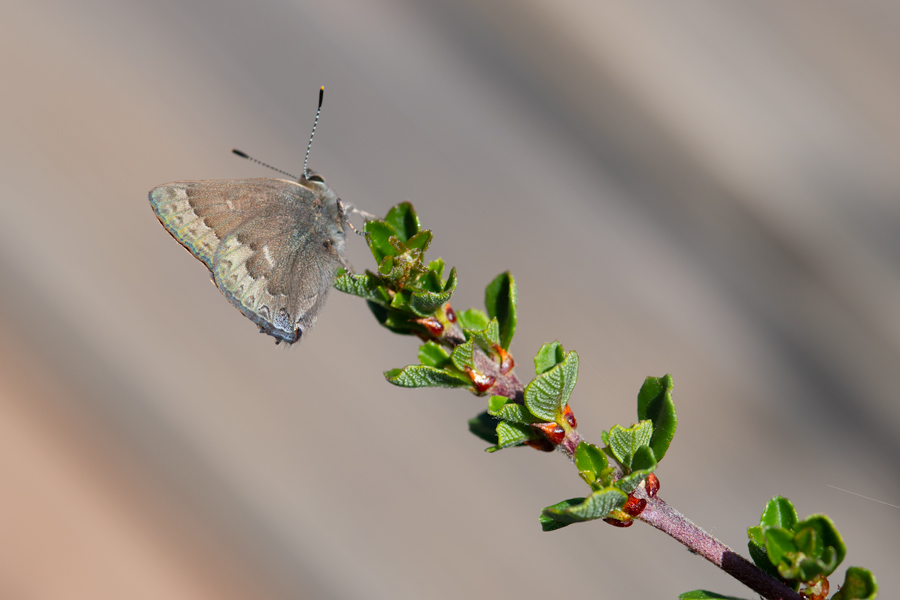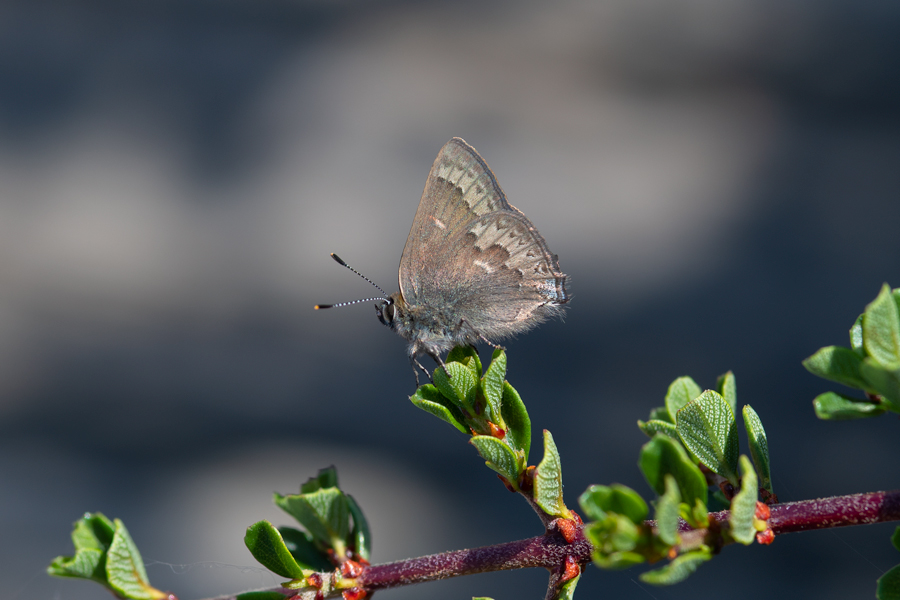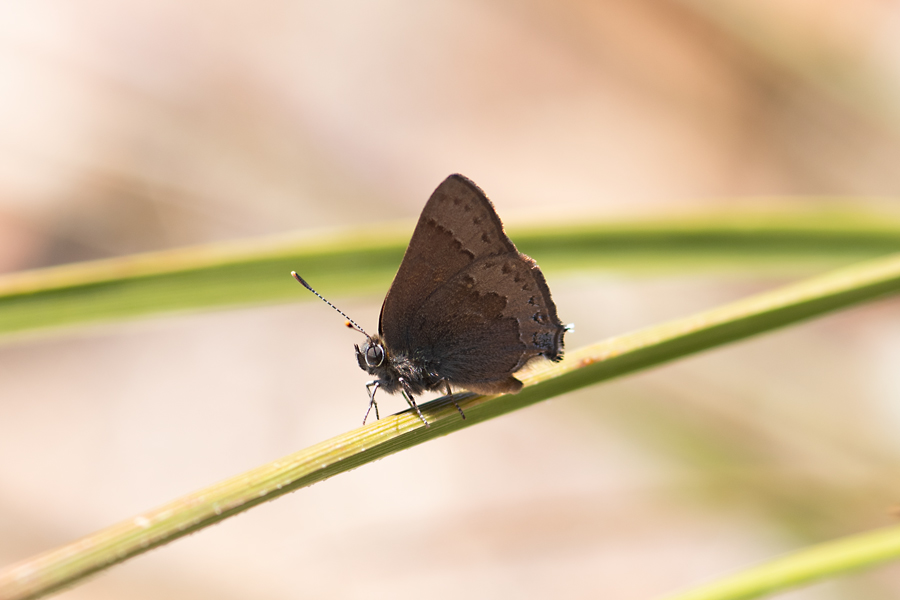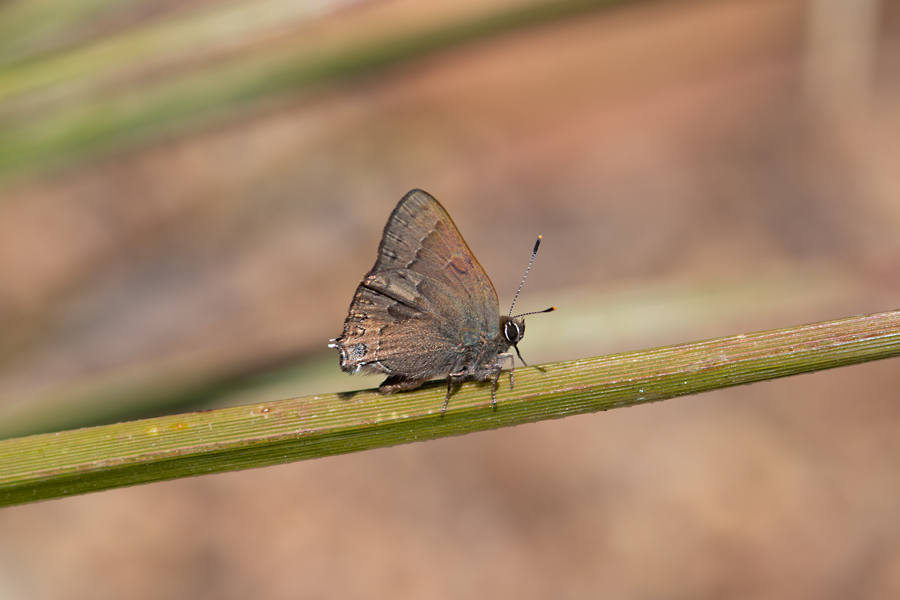Satyrium saepium caliginosum
Dark Hedgerow Hairstreak
This subspecies is best known from the cool San Luis Obispo coastal chapparal habitats where the host Ceanothus cuneatus is present. It differs from subspecies chalcis by the "two-toned" look of the ventral side of the wings; the basal two-thirds is relatively dark. They fly in a single brood from late May through July.
So there are currently four subspecies of saepium in southern California: chalcis covers nearly all of the southern California populations (TL: Isabel Creek, Santa Clara Co.); caliginosum is in a limited area along the immediate coast of SLO and perhaps SB counties (TL: Baywood Park in SLO); chlorophora is in coastal San Diego county (TL: San Diego); and subaridum from the high desert east of the Sierras (type locality: Hunter Mountain in Death Valley NP). The saepium of Santa Cruz Island are said to be very similar to caliginosum.

This is pretty much at the type locality near the Morro Bay estuary at the Elfin Forest in Los Osos, in San Luis Obispo county. The larval food plant this individual was perched on is Ceanothus cuneatus var fascicularis, sand buck brush. The contrast in the wing coloration is a hallmark of this subspecies. May 27, 2023.
Same place and day as above. Males really stay with these shrubs.
In the hills near Cal Poly S.L.O., there appears to be a blend zone with chalcis and a mix of phenotypes, but once out of the fog zone around Lopez Mountain the saepium are typical chalcis. This one, with a bit of the "two-toned" look, is from Reservoir Canyon Loop Trail. June 14, 2021.
Another one from the same hike as above. The Ceanothus used here and in the classic spots closer to the coastline is the same, but this looks like a typical chalcis. To see true caliginosum, it's best to go closer to the coast. June 14, 2021.
©Dennis Walker



